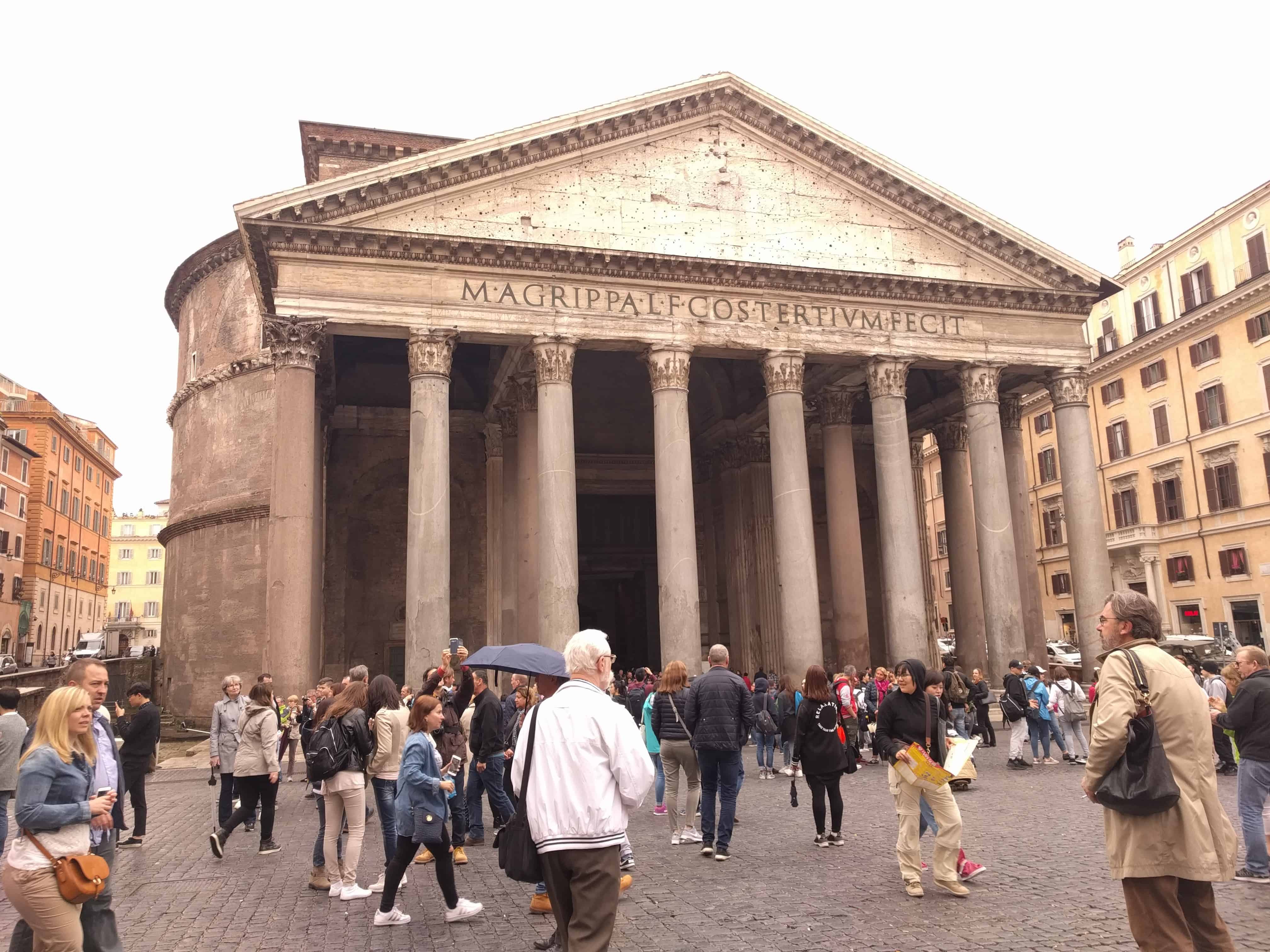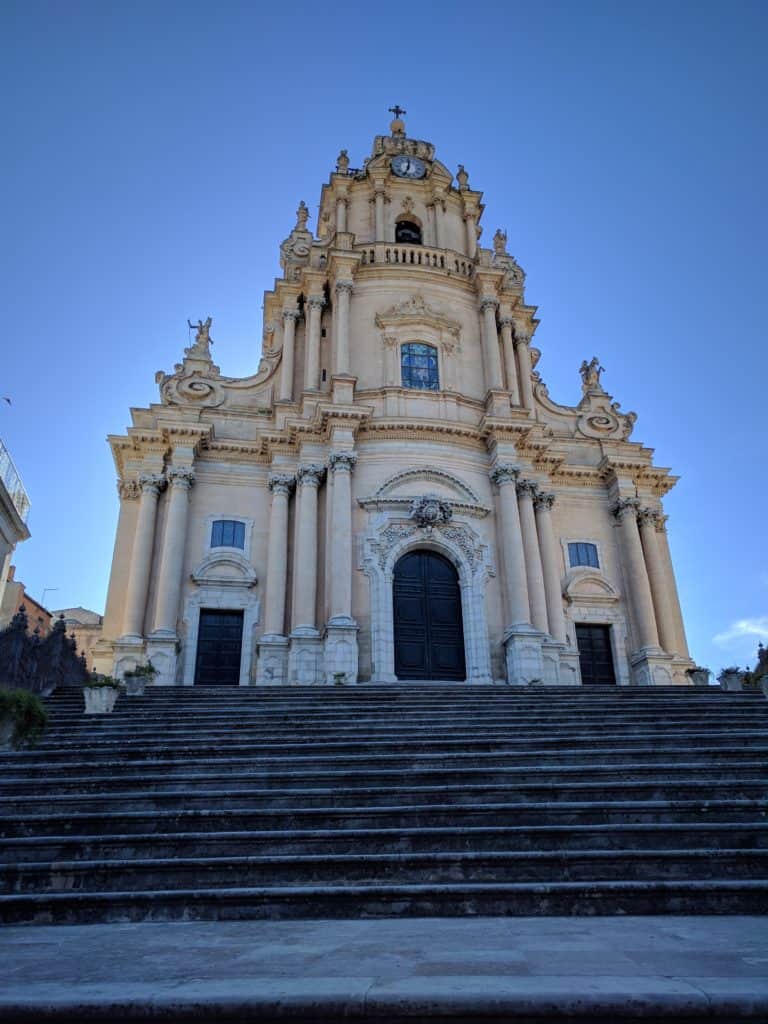Pantheon History
The current Pantheon is actually the third on this site. The first built by Marcus Agrippa was destroyed by a fire in AD 80. Replaced by Domitian, it then was struck by lightning in AD 110 and burned again. Hadrian did not dedicate the new Pantheon in his own name but that of the original architect, thus the bold inscription reads: M. AGRIPPA L. F. COS TERTIUM FECIT (Marcus Agrippa, son of Lucius, made this in his third consulship).
Faintly legible beneath is a two line inscription which refers to the renovations made in AD 202 by Severus and Caracalla: with every refinement they restored the Pantheum, worn by age) but it seems no rebuilding was involved.
The building was approached from the front with four wide steps of yellow marble. All eight columns across the front and two down the outsides should be of grey granite, only the four in the middle the rose-pink of Aswan, but the left flank was badly damaged during the middle ages and its columns restored during the 17th century using pink Aswan shafts.
The door in the corner leads to a staircase in the triangular space between the porch and the Rotunda which serve rooms located at the top. The outside doors around the base of the Rotunda lead into small semicircular voids in the thickness of the wall, perhaps used for storage.
The bronze doors are ancient and were in place by the 15th century but are unlikely to be the originals.
The Rotunda has an internal diameter of 44.m., which is the same as the height from the floor to the circular oculus in the roof; its dome is a perfect hemisphere. The wall of the Rotunda is 6 m. thick.
The alcoves are variously transformed into chapels and tombs(those on the cross axis contain the kings and queens of the short-lived Italian monarchy, 1870-1946). A small shrine on the left is the tomb of the great Renaissance painter Raphael (1483-1520.)
What is the Point of the Pantheon in Rome?
No one really knows what function the Pantheon served. The name and decoration has generally been to signify that it was a temple, either a temple ‘of all the gods’ or more plausibly, some kind of ruler-cult. It is possible that the Pantheon provided a setting in which the living emperor would appear in company with the gods (including his own defied predecessors).
Located on the edge of ancient Rome, alongside Agrippa’s public park, lake, basilica and baths its possible uses as a ceremonial space could be many. It was said that Agrippa originally intended to honour Augustus, by naming the building after him and setting up his statue in it, but Augustus refused the honour and his statue was replaced by one of his father Julius Caesar; statues of Augustus and Agrippa were set up in the porch.
Some experiences are worth paying extra for. This includes paying around €5 extra for a cappuccino on Piazza della Rotonda to watch the world go by in front of Rome’s most iconic sites.
At the end of 2018, a 3 euro charge is said to be introduced to visit the Pantheon. This will be the first time in it’s history! You can read more here.




